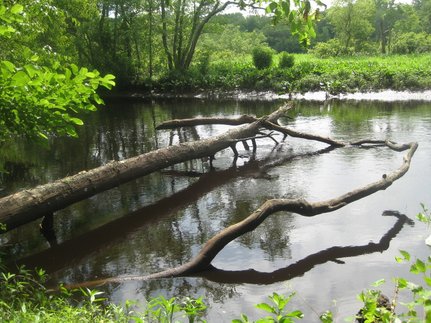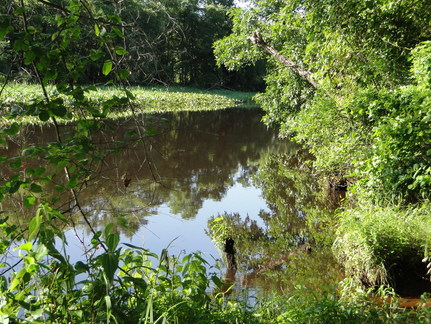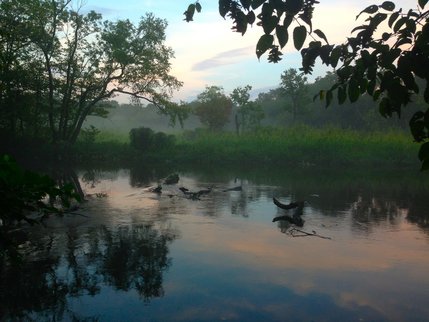RANCOCAS CREEK HISTORY
|
The Rancocas Creek History and surrounding land from Mount Holly to the Delaware River is rich in early American history, custom, and folklore. In the late 1700's and early 1800's, the Rancocas Creek was heavily used as a transportation route from Mount Holly to the Delaware River and Philadelphia. Although a considerable amount of information exists on the history and the past practices of the areas surrounding the Rancocas Creek, information pertaining specifically to the natural area is limited.
The NJ Department of Environmental Protection (DEP), Office of Historic Preservation, reports that American Indians inhabited areas all along both branches (North & South) of the Rancocas Creek throughout much of the 12,000 years of prehistory (Deborah Fimbel, pers. comm. 1996). The North Branch of the Rancocas Creek flows along the the southern boundary of the natural area. The NJ State Museum, Archeology/Ethnology Bureau, reports that known prehistoric archeological resources appear to be located within the boundaries of the natural area and within a one mile radius. While the natural area may have been utilized during prehistoric times for its plant and animal resources, historically, its predominantly wet soils have limited agriculture and development, activities which often lead to the discovery of prehistoric remains through the disturbance of soil (Deborah Fimbel, pers. comm. 1996). An archeological survey of the area would be needed, however, to confirm the existence of prehistoric remains in the natural area. Karl Anderson, former Director of the Rancocas Nature Center, which lies within the Rancocas State Park and surrounds the natural area on two sides, was familiar with the history of the natural area. He provided excerpts from a writing by C.H. McIlvain which briefly describes the activities of Charles Longstreth Mather within the natural area. Charles Longstreth Mather brought the area, which includes the natural area and was part of the Rodger's estate in 1855. At the time of purchase, Mather and his family resided in an existing brick house that was built in 1768. Sometime between 1859 and 1890, the house burned down and a new one was immediately erected. Mather planted crops and marketed wood from the forest. He also dug large deposits of muck from the lowlands, which he applied to the upland soils to increase crop productivity. He built a large lime kiln in which thousands of bushels of oyster shells were burned and turned into lime which was also spread over cropland. By banking, damning, and draining, Mather reclaimed large quantities of the flooded meadow lands which occupied many acres of this farm. He was successful at creating productive pasture in much of the flooded meadows, where he grazed cattle for a number of years. He also tried shipping molding sand from his farm to Philadelphia. |



